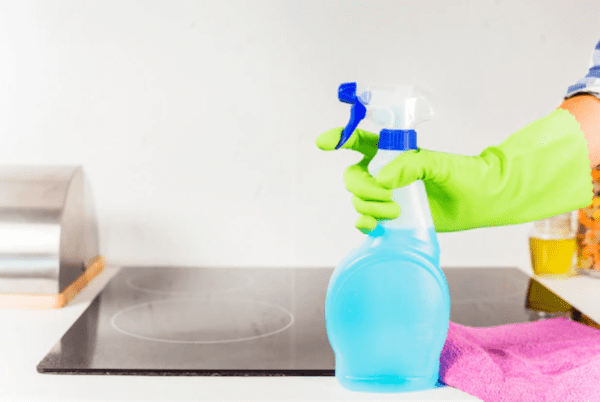From Cleaning Power to Potential Risks: A Deep Dive into Vim's Ingredient List
Are you curious about what goes into your cleaning products? If so, you're in for a treat! In this deep dive, we'll take a closer look at Vim's ingredient list, revealing both its cleaning power and potential risks. Vim has long been a trusted name in the world of household cleaning, but have you ever wondered what makes it so effective? We'll explore the key ingredients that give Vim its unparalleled cleaning power, from powerful surfactants to cutting-edge enzymes. But it's not all sunshine and rainbows. We'll also shed light on some potential risks associated with certain ingredients found in Vim. As consumers become more conscious of the products they bring into their homes, it's crucial to understand what we're using to keep our spaces clean. So, let's roll up our sleeves and dive into the world of Vim's ingredient list, unlocking the secrets behind its cleaning prowess and exploring any potential concerns along the way.
Understanding the ingredients in Vim
Vim's cleaning power can be attributed to its carefully selected ingredients. Let's start by examining some of the key components that make Vim such an effective cleaning agent.
1. **Surfactants These compounds reduce the surface tension between water and dirt, allowing the dirt to be easily lifted and removed.
2. **Enzymes**: Enzymes are biological catalysts that break down complex molecules into smaller, more manageable components.
3. **Chelating agents**: Chelating agents are substances that bind to metal ions, preventing them from interfering with the cleaning process.
4. **Fragrances**: Fragrances are added to cleaning products to leave a pleasant scent after use.
Understanding these ingredients gives us a glimpse into how Vim works its magic. However, it's important to note that some of these components may have potential risks associated with their use. Let's explore these concerns further.
The potential risks associated with Vim's ingredient list
While Vim excels in cleaning, there are certain potential risks that consumers should be aware of. It's essential to understand the potential impact of these ingredients on our health and the environment. Here are some key concerns
1. **Irritation and allergies**: Certain surfactants and fragrances found in Vim may cause skin irritation or trigger allergies in sensitive individuals. It's important to read the product label and take necessary precautions, such as wearing gloves and ensuring proper ventilation when using Vim.
2. **Environmental impact**: Some of the ingredients in Vim, particularly phosphates, can have adverse effects on aquatic ecosystems. These compounds can contribute to water pollution and the growth of harmful algal blooms.
3. **Toxicity**: While Vim is generally safe for use when used as directed, ingestion or exposure to large amounts of certain ingredients can be harmful. It's important to keep cleaning products out of reach of children and pets and to follow proper safety precautions at all times.
It's worth noting that regulatory bodies, such as health and environmental agencies, closely monitor the use of these ingredients in cleaning products to ensure their safety. However, it's always a good practice to stay informed and make conscious choices when it comes to the products we use in our homes.
Eco-friendly alternatives to Vim
If you're concerned about the potential risks associated with Vim's ingredients or wish to minimize your environmental impact, there are several eco-friendly alternatives available. These alternatives offer effective cleaning power without compromising your health or the planet. Consider the following options:
1. **Plant-based cleaners**: Look for cleaning products that are made from plant-derived ingredients. These cleaners are often biodegradable and free from harsh chemicals, making them a safer choice for both your health and the environment.
2. **Natural DIY cleaners**: You can create your own cleaning solutions using simple ingredients like vinegar, baking soda, and lemon juice. These natural alternatives are cost-effective, eco-friendly, and often just as effective as commercial cleaners.
3. **Certified eco-label products**: Look for cleaning products that carry recognized eco-label certifications, such as the EPA Safer Choice label or the EU Ecolabel. These certifications ensure that the products meet strict environmental and safety standards.
Here are some alternative natural cleaners:
1. awenest Plant Based Dishwash Concentrate
2. Goli Soda All Natural Probiotics Dish Wash Bar
3. Kamarkattu Ecostore , Natural Dish wash Powder
4. Rustic Art, Lemon Tamarind Dish Wash Concentrate
By opting for these alternatives, you can make a positive impact on your health and the planet, while still maintaining a clean and fresh home.
Tips for safer cleaning practices
In addition to choosing safer cleaning products, there are some general tips and practices that can help ensure safer cleaning experiences:
1. **Read product labels**: Always read the labels of cleaning products before use. Look for warnings, instructions, and ingredient information to understand any potential risks and how to use the product safely.
2. **Ventilate properly**: When using cleaning products, open windows or turn on fans to ensure proper ventilation. This helps reduce exposure to potentially harmful fumes and improves indoor air quality.
3. **Wear protective gear**: When handling cleaning products, especially those that may cause skin or eye irritation, wear gloves, goggles, and other protective gear as recommended on the product label.
4. **Store safely**: Keep cleaning products out of reach of children and pets, and store them in cool, dry places away from direct sunlight. Proper storage helps prevent accidental ingestion or exposure.
By following these practices, you can minimize the potential risks associated with cleaning products and create a safer environment for yourself and your loved ones.
Consumer awareness and making informed choices
As consumers, we have the power to drive change and demand safer, more sustainable products. By being aware of the potential risks associated with cleaning products like Vim, we can make informed choices that prioritize our health and the environment. Here are some steps you can take:
1. **Research**: Stay informed about the latest research and findings on cleaning product ingredients. Educate yourself about potential risks and alternatives.
2. **Support responsible brands**: Look for brands that prioritize transparency, safety, and environmental sustainability. Support companies that are committed to producing safer and greener cleaning products.
3. **Advocate for change**: Join or support organizations that work towards safer cleaning practices and advocate for stricter regulations on harmful ingredients. Together, we can make a difference.
Conclusion: Making the best choices for your health and the environment
In this deep dive into Vim's ingredient list, we've uncovered the secrets behind its cleaning power and explored the potential risks associated with certain ingredients. While Vim remains a trusted brand, it's essential to be aware of the potential risks and make informed choices that prioritize our health and the environment. By understanding the ingredients in cleaning products, exploring eco-friendly alternatives, practicing safer cleaning practices, and staying informed, we can create a cleaner and safer home for ourselves and future generations. So, let's take charge of our cleaning routines and make choices that benefit both our well-being and the world we live in. awenest - Plastic-Free Marketplace for Sustainable Living provides you with safe and natural cleaners for your home.
- Team awenest






